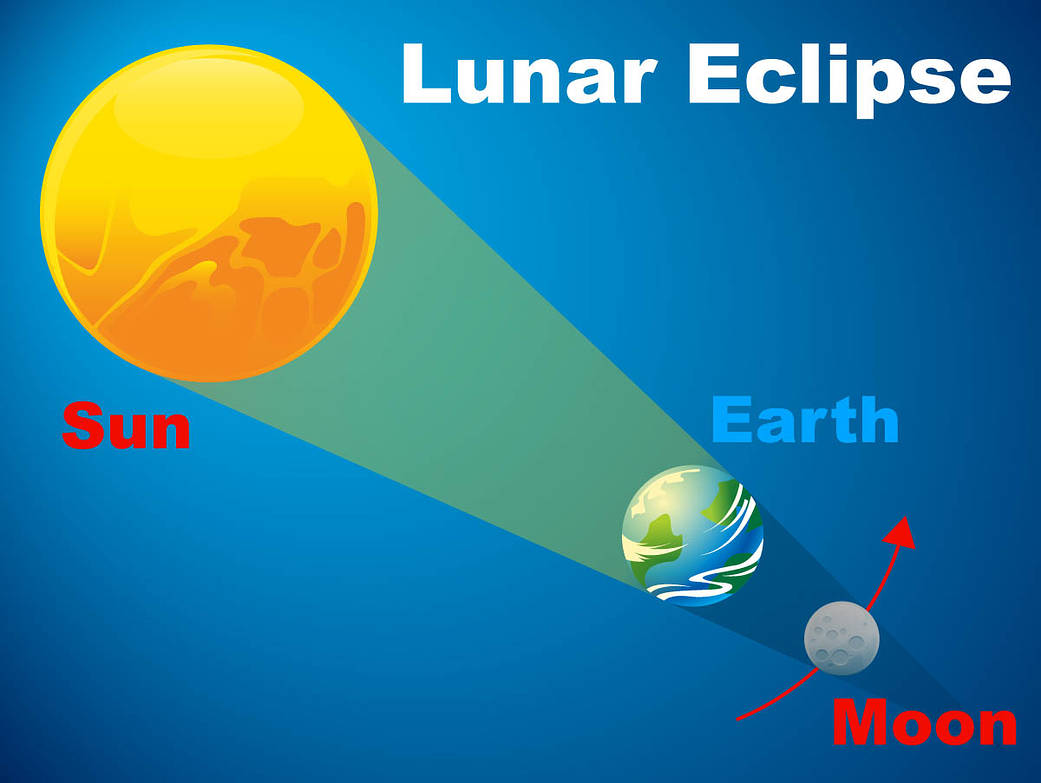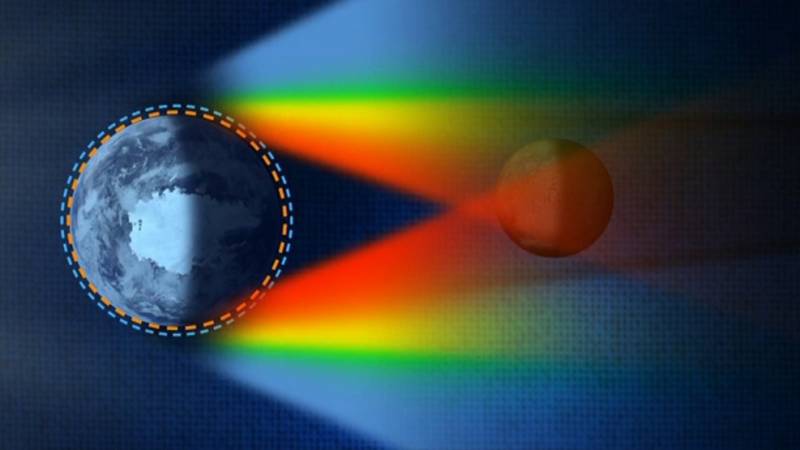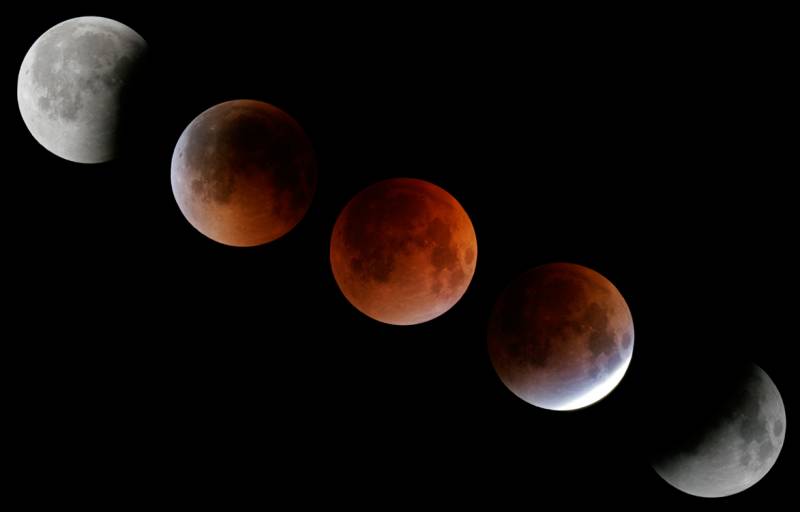One of the most beautiful sights of the night sky is the appearance of a total lunar eclipse, when the moon makes a rare passage straight through Earth’s shadow.
Rare, yes, but on the West Coast, the spheres will align on May 15 to give us a front-row seat to the spectacle — and at a convenient time of night, as well.
When is the eclipse?
When the moon rises, shortly after 8 p.m. PDT on Sunday, the eclipse will already be in progress. But don’t worry about missing the beginning; The best is yet to come.
The eclipse will enter “totality” — when the moon is fully engulfed in Earth’s shadow — at 8:29 p.m., reach maximum darkness at 9:11 p.m., and end at 9:54 p.m. When totality ends, the moon will reenter a partial eclipse phase, gradually moving back into the sun’s light.

How do you see the eclipse?
The moon will rise in the southeast, and by the time totality begins at 8:29 p.m., it will have risen 12 degrees above the southeastern horizon — about the span of your open hand. So, you simply need to find a moon-watching spot with a clear view of the southeastern horizon.
Unlike observing fainter celestial events like meteor showers, you don’t need to travel to a dark sky location to enjoy the eclipse. Even when the moon is dimmest, at maximum eclipse, it will be a prominent object in the heavens.
What will you see?
Since this lunar eclipse will already be in progress when the moon rises, what would be a full moon will have a large, dark “bite” taken out of one side. Some ancient cultures even explained a lunar eclipse as a celestial being — a dragon, or a dog — devouring the moon.
During totality, the moon will darken significantly, as well as change color from full-moon-white to a rusty orange or even blood red, depending on atmospheric conditions. That’s why a total lunar eclipse is often called a blood moon. The effect can make the moon look three-dimensional, like a coppery ball hanging in the sky — almost like you could reach out and touch it.
The orange and red tones during totality are caused by the filtering of sunlight by Earth’s atmosphere.

As the sun’s light grazes around Earth’s edges, it passes through hundreds of miles of atmosphere, and its bluer tones are partially blocked and scattered by atmospheric gas molecules. But redder tones of sunlight pass through more freely, slipping around the sides of our planet and shining onto the moon.
You can see the same effect on the sun’s light every day when you watch a sunrise or sunset, when the sun is near the horizon and filtered to appear orange or red. And even in twilight, when the sun is below the horizon, the sky is still glowing with rosy light scattered in the atmosphere.
When’s the next eclipse?
Though eclipses, both lunar and solar, are rare events to witness, they occur more often than you might think. There was a partial solar eclipse on April 30, but you had to be at the southern tip of Chile or in parts of the extreme southern Pacific Ocean to see it. Another partial solar eclipse will be visible from Europe and the Middle East in October.
But here on the West Coast we’re in luck, for another total lunar eclipse will be visible in 2022, starting around midnight on Nov. 8 and reaching maximum eclipse a few hours before sunrise — not as convenient as this month’s, but we’ll be able to see the entire eclipse from beginning to end.

